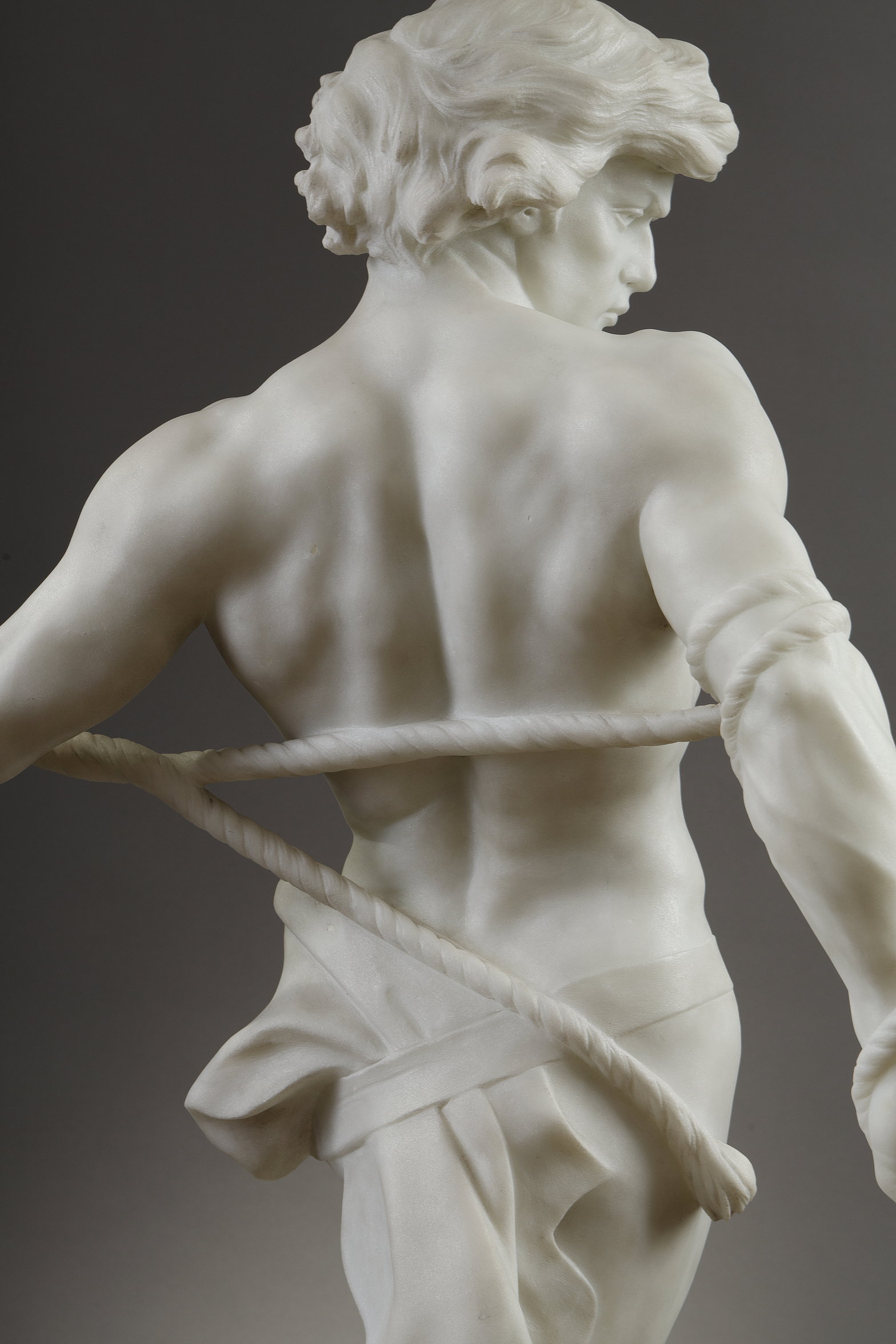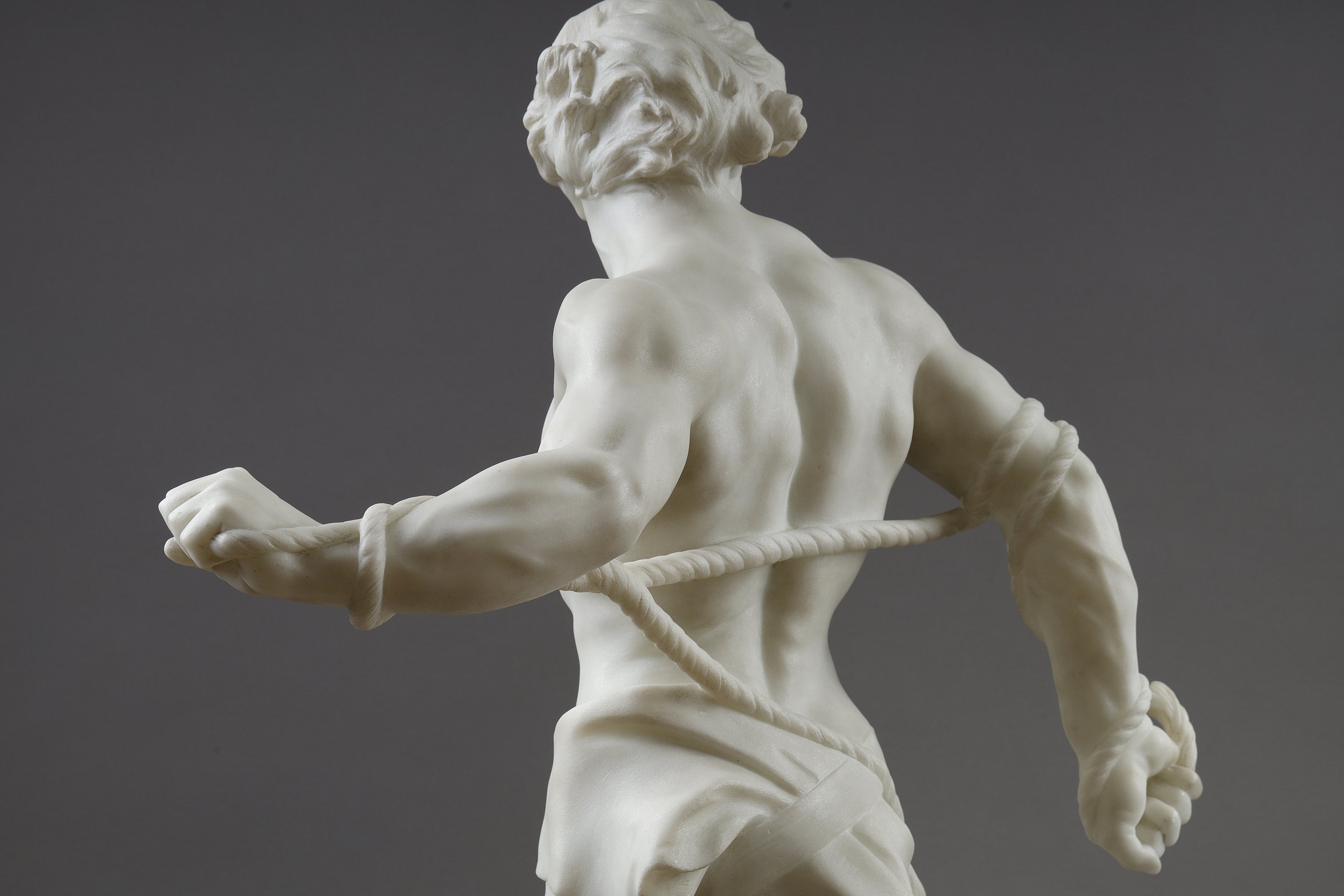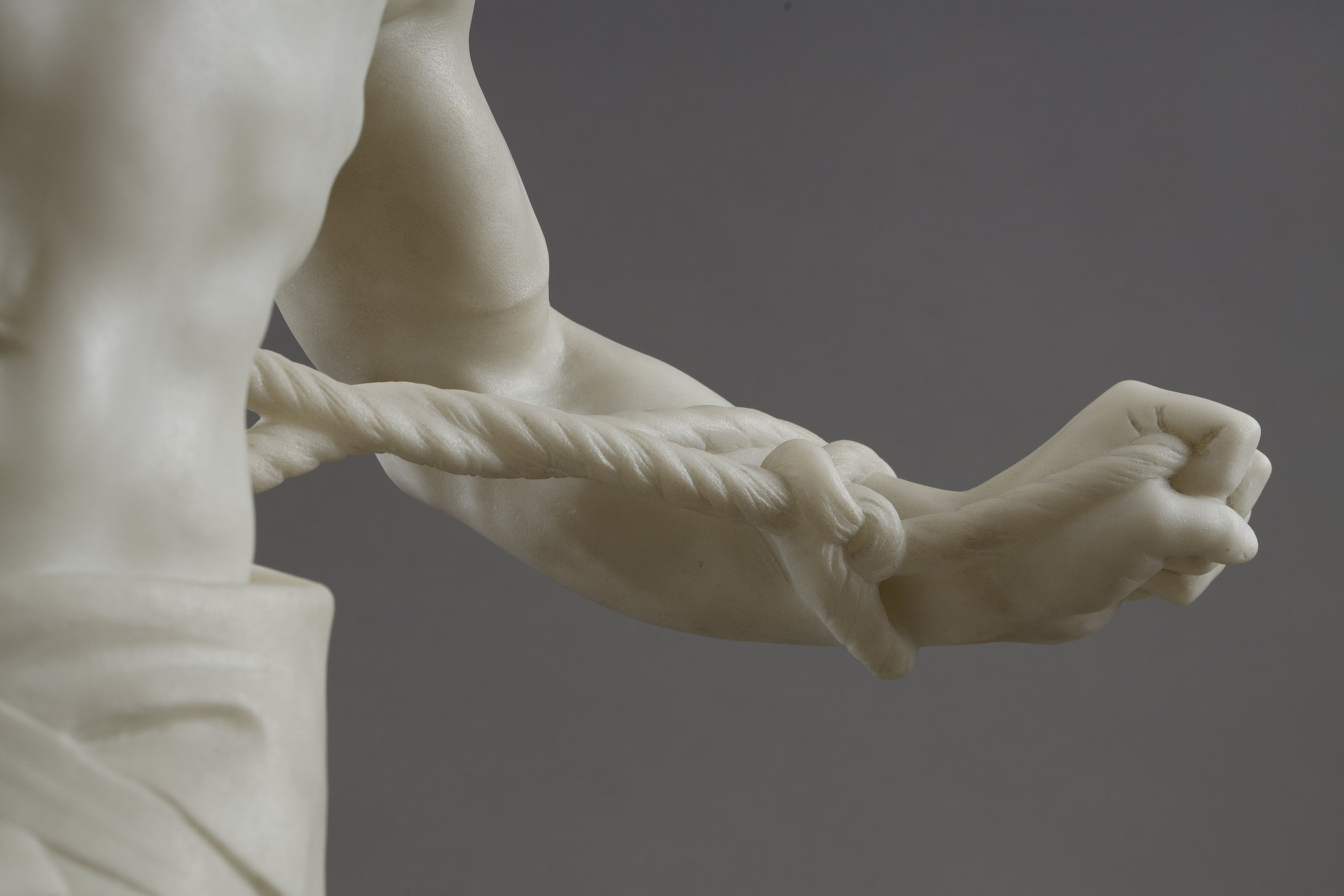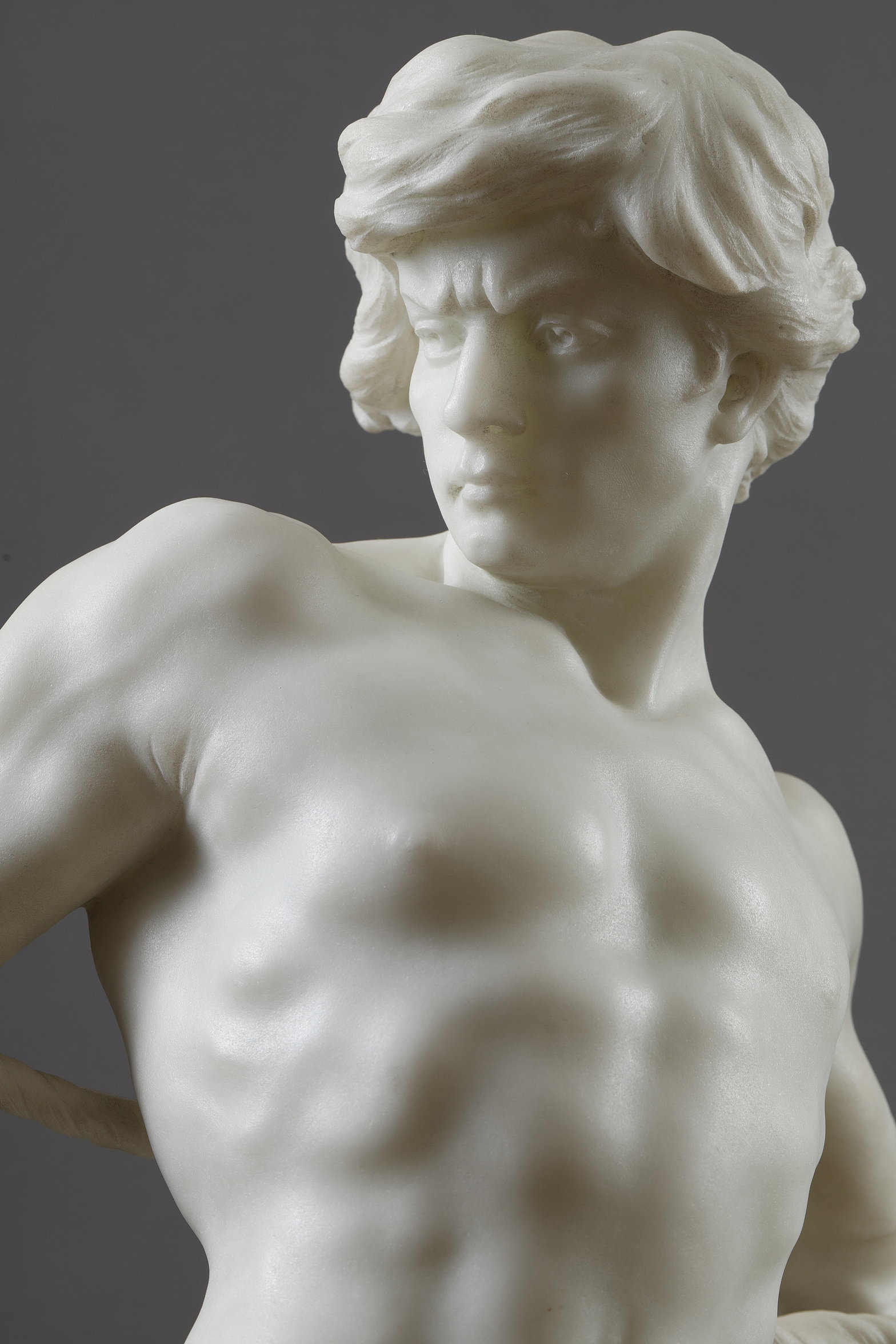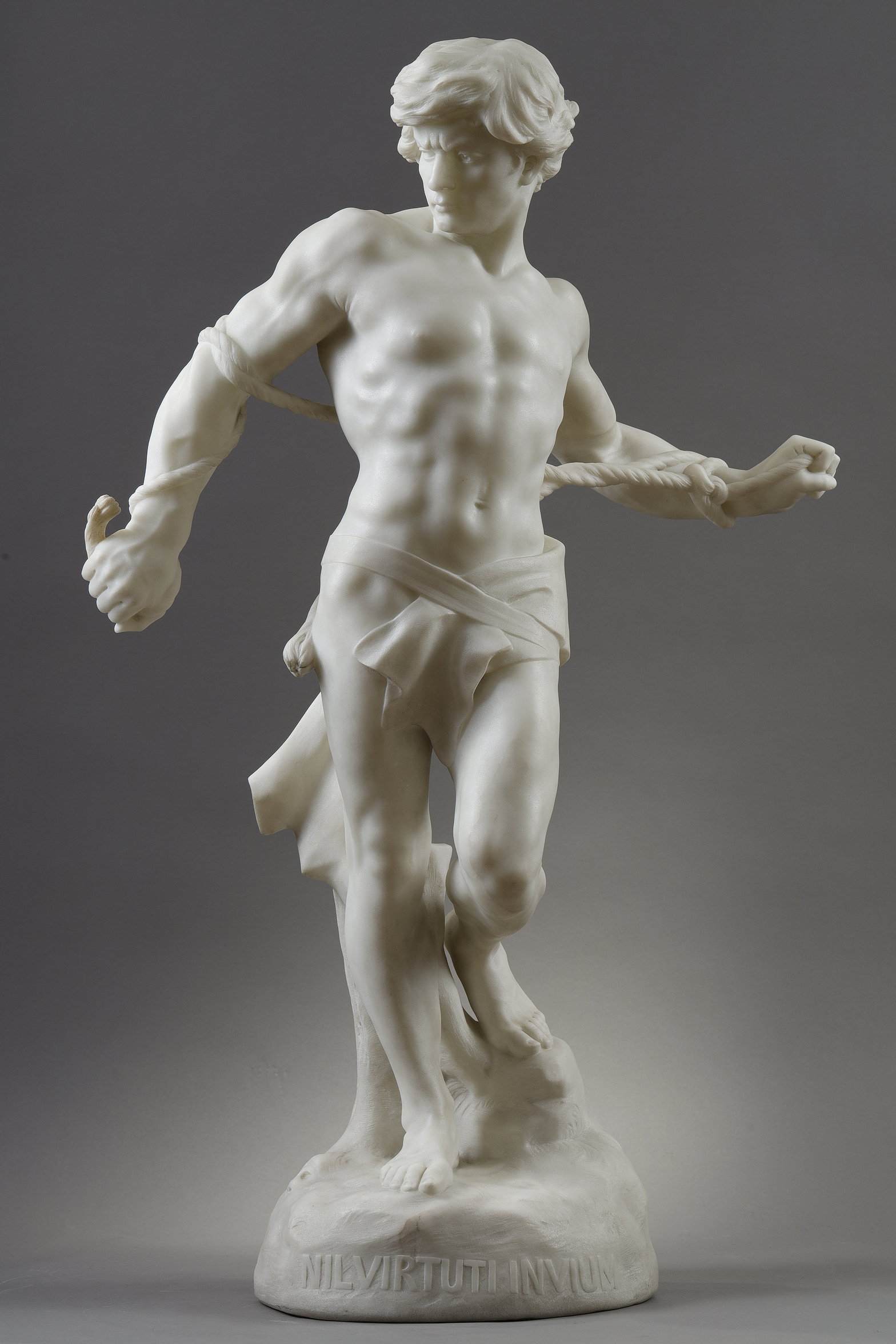
“Nil Virtuti Invium”
by Henri Gauquié
« Nil Virtuti Invium » is a tour de force of 19th-century French sculpture, capturing both the human condition and the complexity of physical form.
The intricate details are impeccably executed, from the sinewy tension in the muscles to the fine contours of the entangling rope. The form appears arrested in a moment of struggle, encapsulating the timeless conflict between human will and external forces. The artistic philosophy behind this piece echoes the grand themes of existentialism and fortitude, prevalent during the late 19th century.
The french sculptor Henri Gauquié (1858 – 1927)
Henri Gauquié was a distinguished French sculptor born in 1858 and active during the late 19th and early 20th centuries. He was renowned for his depictions of human and animal forms, often rendered in bronze and marble. Gauquié studied under famous mentors like Emmanuel Frémiet and exhibited his works at the Salon des Artistes Français, earning various awards and distinctions. His works are part of significant public and private collections and are a tribute to his technical mastery and emotional depth.
Dimensions :
- Height 90 cm (35 inch)
- Width 59.5 cm (23 inch)
- Depth 30.5 cm (12 inch)
- White Carrara marble sculpture.
The sculpture has an illustrious provenance, having been acquired by a Dutch family at the TEFAF in Maastricht in 2005.
- 19th Century
- Benezit Dictionary of Artists, Editions Gründ, 2006
- “French Sculpture 1800-1825,” by Christopher Payne
- “Henri Gauquié: A Retrospective,” Catalogue by [Museum/Institution]
- « The Impact of the Salon des Artistes Français in the 19th Century, » by Elaine Evans Dee
- « TEFAF Maastricht and its Influence on the Art Market, » by Jorrit van der Waal

